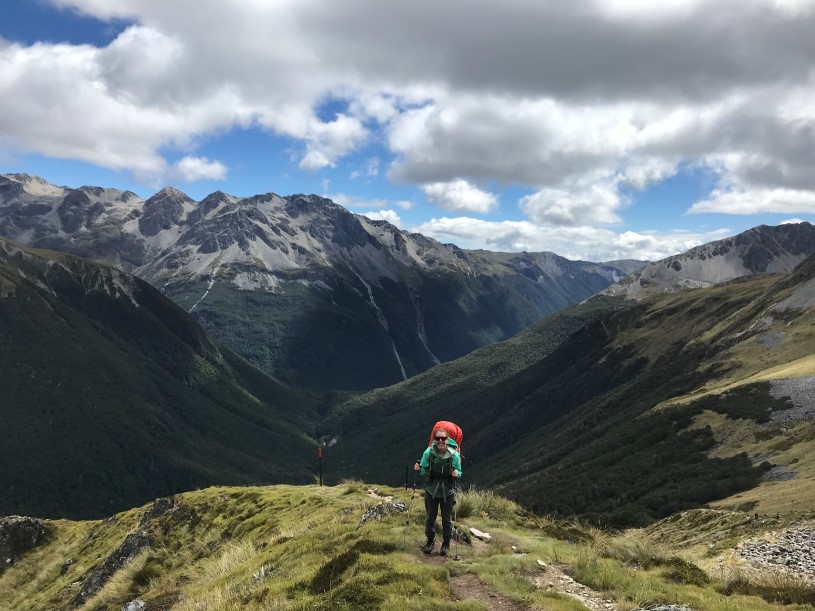
Next Challenge Grant winner Chase Lewine and his partner, Eve, recently completed the Te Arora Trail, a 3,000km walk that runs the full length of New Zealand’s two main islands.
They encountered mud baths, cyclones, cheeky Kea birds and wild pig hunters. But, as with so many tales of adventure, it is the stories of human kindness that shine through. Welcomed in by strangers on Christmas Eve, picked up truck drivers on lonely roads, and saved from storms by friendly locals.
Here is Chase’s account of the journey…
[one_sixth]–[/one_sixth]
[two_third][box]
The Next Challenge Grant
Chase’s trip was supported by The Next Challenge Grant, an annual bursary for aspiring adventurers.
It’s funded by me – Tim Moss – several other adventurers and crowdfunded public donations.
Since 2015 it has supported 50 different expeditions with awards from £50 to £800.
[/box][/two_third]
[one_sixth_last]–[/one_sixth_last]
Te Araroa Trail: Two people, 3,000km and 136 days
by Chase Lewine
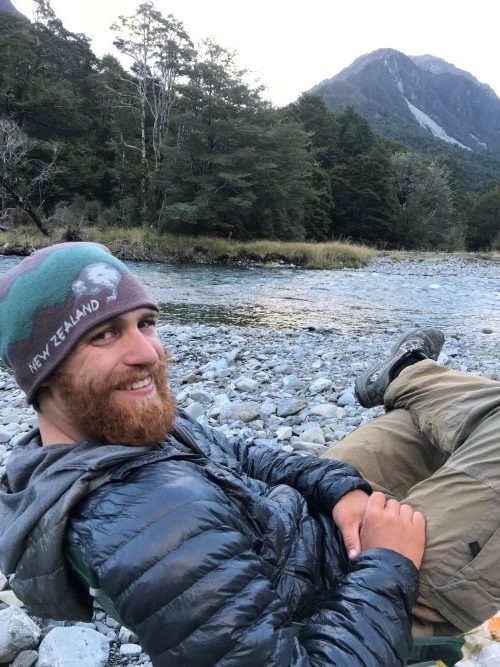
The North Island
Hitch Hiking to Cape Reinga
Getting to Cape Reinga, the northern tip of New Zealand, and the start of the trail was half the fun. We flew on a small plane to Keri Keri a northern New Zealand town , with the idea we would hitchhike to the north tip of the country. Some 120 miles of hitchhiking took a series of eight different rides. Each person told us heaps of stories and made for quite the entertaining day. Of course, there were often times when we stood on the road side tirelessly waiting for a car to stop. We rode with a bee keepers, avocado growers, corn farmers and loads of others. This was our first taste of ‘Kiwi Kindness”. As the sun started to hang low, alas we arrived at the lighthouse at Cape Reinga, and instantly were overjoyed. The unknowns of the adventures and struggles to come for the next four months had my heart racing. We only hiked a few miles that night but we were treated to one of the best sunsets I ever encountered . It was all southbound from there!
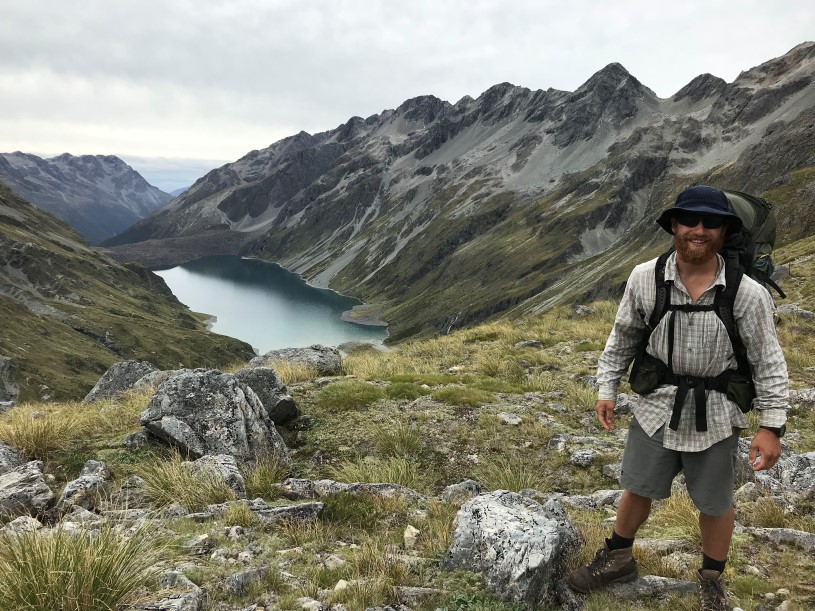
The Northland Forests
After four days of beach walking, we exited the sand and went deep into the Northland Forests where a change of scenery was certainly welcomed, even if meant changing boots full of sand for boots full of squishy mud. This was thick mud, the kind that would suck your whole foot in and slurp. Miles and miles of mud. All the locals kept saying it was the dry season and this was nothing. I couldn’t imagine coming here in the wet season.
New Zealand is full of remarkable sights, and I feel the Northland Forests are an area that few make the trip to explore. Walking for days through the thickest bush I ever encountered, constantly working through knee deep mud, was a physically daunting as well as rewarding ordeal. The bush was so thick the sky was hardly visible. A mosaic of tree cover produced a canopy over our heads as we worked through the muddy green tunnel.
Eventually, we made it out of the Herekino and Raetea Forest and arrived to the small town of Mangamuka.
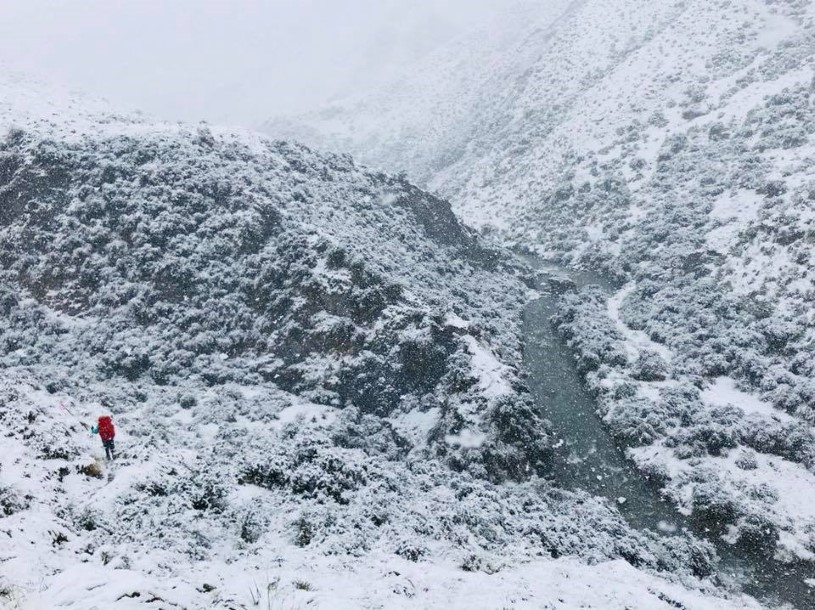
A Kiwi Christmas – “Whatever!”
When we later reached the town of Matapouri, it happened to be Christmas Eve. Still a fair bit away from the next trailhead, it was getting late and we were struggling to figure out camping options as we were walking through a small neighbourhood. We saw a family enjoying the evening on their front porch, and we asked if they had any advice. Despite these being strangers who most likely were trying to enjoy Christmas holiday, the family who only knew us for 15 seconds, quickly allowed us to camp in their backyard; enjoy a home cooked dinner with them and lots of beer; get a well needed hot shower; and even surprised us with Christmas presents the next morning.
As our new friends liked to constantly say: “Whatever”! A good reminder to not get stressed or worried over the little things. It was a true pleasure to spend Christmas with a local kiwi family. We have remained in touch with the family ever since.
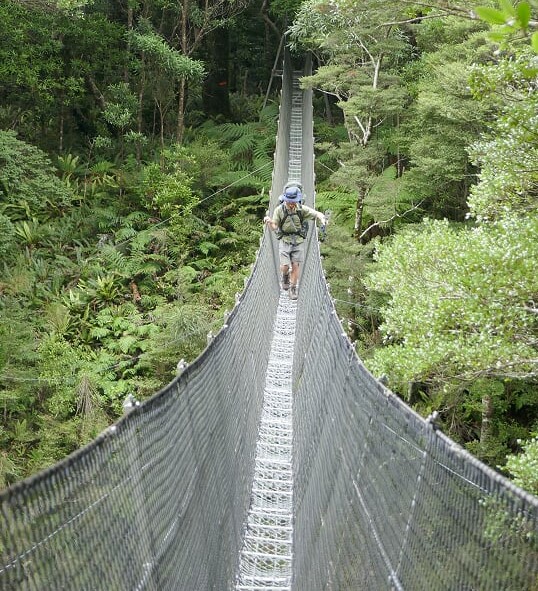
Long trails, big cities
Long trails typically don’t pass through massive metropolitan cities. But the Te Araroa gives a taste of all New Zealand. From the beaches, to the forest, the cow paddocks and the open fields, it was only a matter of a time until we had the true ultimate challenge: navigating through a city with 1.6 million people. Auckland.
As much as we love wild spaces, after nearly 600 kilometres of walking we were excited to be a in real city to get some good eats. Hopefully something besides canned tuna.
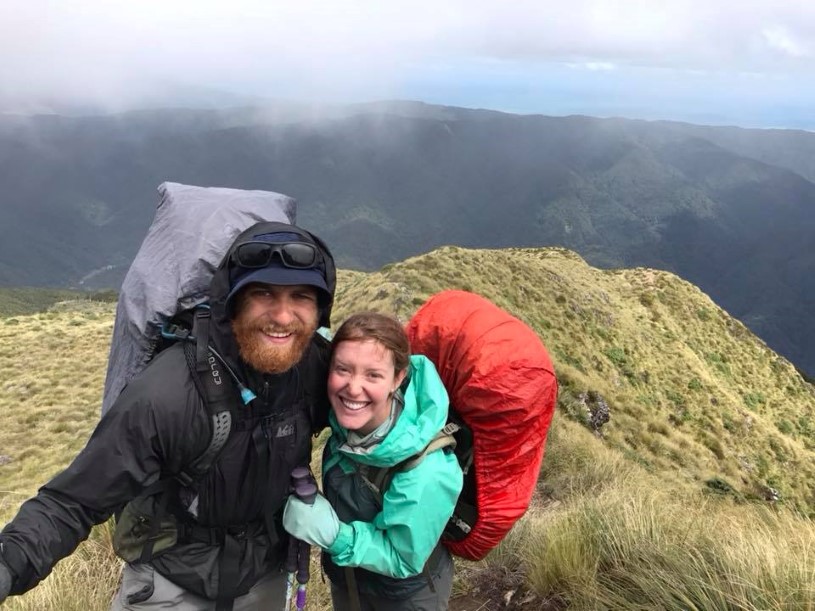
Milking a cow
After leaving the city, we found cows, beaches, thick bush, mud and mountains. But what we hadn’t expected was the electric fences. The track walks us through dozens of cow paddocks, sometimes with hundreds of cows that we had to walk amongst. But the electric fences which kept the cows in certainly proved to be an exhilarating hurdle for us. At all hours we climbed over and under many fences and somehow only got shocked twice. I found walking through the cow paddocks emphasized the diverse terrain New Zealand has to offer. Dairy and beef are major NZ industries, and experiencing this on the trail made for a deeper connection to the kiwi way of life.
Spending so much time on cow paddocks, I soon had a strong urge to milk a cow. By odd chance, my wish was granted.
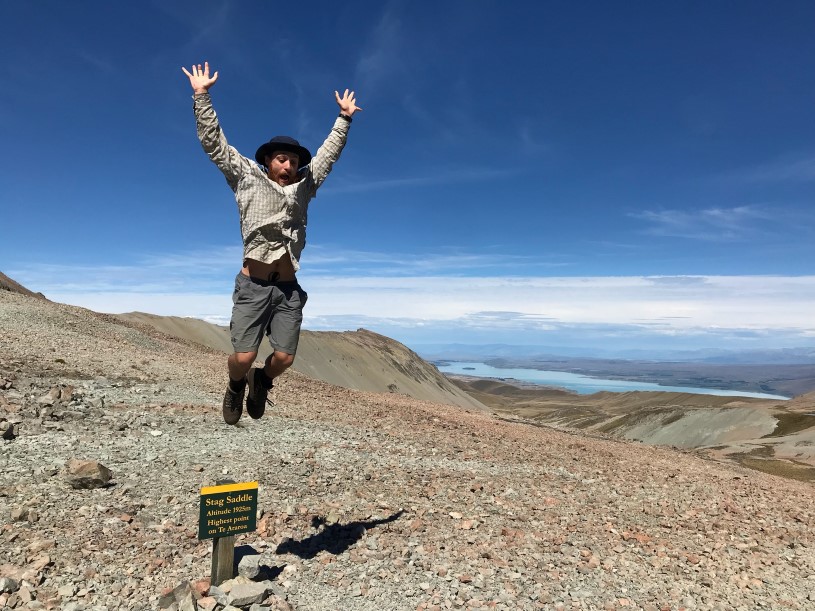
It was a long and hot day tramping. Exhausted and feeling a bit under the weather, we sat on a bench outside a grocery. A woman came up to us and we started chatting. She was a dairy farmer, and within 30 seconds of talking, she invited us to stay on her farm and relax. We ended up staying for two days in a private farm house- we bbq’d, learned all about dairy farming andm best of all, I even helped milk the cows one morning. The kindness of strangers inviting us to their homes was beyond incredible.
From cows to sheep to vast open fields, we continually worked our way across the private land the land owners so graciously allowed Te Araroa trampers to cross. The trail wouldn’t be possible if it wasn’t for the permission by private land owners, and it’s a great reminder for Te Araroa walkers to use the utmost respect and Leave No Trace ethics while walking the trail.
After cows, sheep and the occasional shock by an electric fence, we soon were led back into the thick of the mountains. At the 800km mark, we treated ourselves to a hot spring and jar of Nutella.
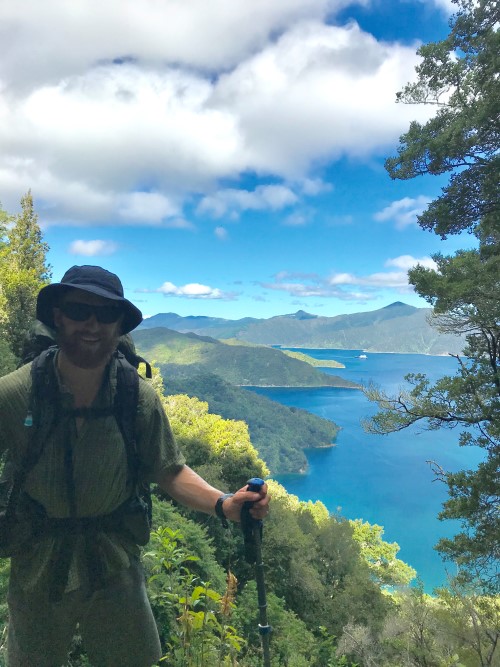
Walking every mile
Later in our trip, was we walking down the road to the Tararua Mountain Range, a truck driver in an 18-wheeler pulled over and offered us a lift. Te Araroa initially was about walking every kilometre of New Zealand, even the road sections that connect the substantial amount of tracks that make up the trail. However, the opportunities to engage with kind and gracious locals became substantially more rewarding then walking sections of road often full of speeding cars. Plus, how often do you get to ride in an 18 wheeler truck?!
Though our intent was to get dropped off at the trailhead, the trucker insisted on taking us out for fish‘n’chips and invited us to spend the night at his home (equipped with a swimming pool!). We accepted the gracious offer and had a wonderful evening swimming and talking with the truckdriver and his wife. In America, where I am from, I feel you would be encouraged not go home with a truck driver that stops and picks you up. Though that advice is reasonable, I have discovered the culture and kindness towards strangers in New Zealand is far beyond what I have observed in America. I am thankful the Te Araroa has allowed me to experience this act of kindness from strangers. If it wasn’t for the Te Araroa, and we were traveling New Zealand in a van for instance, we certainly would not be exposed to these gracious experiences.
The next morning the truck driver dropped us off at the start of our next trailhead.
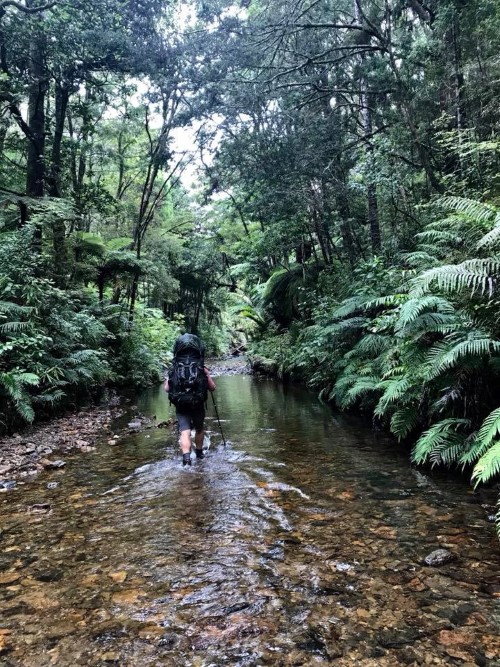
The Tarauas
We spent five days walking through bizarre forest, over high suspension bridges and across razor thin mountain edges, while mostly getting battered by absurd amounts of wind and rain. Occasionally the sun came out, providing some wild views. The Tarauas were our first taste of true New Zealand mountains and are often referred to by locals as exhilarating, dangerous and the ultimate tramping ground.
One thing that made this particular range doable and safe was the huts. Tramping in New Zealand is special due to the prominent number of huts the Department of Conservation builds and maintains. These huts sometimes are rather simple with two bunks, four walls and a roof (and even this is glamourous on a rainy, cold night!). But often, the huts have a kitchen area, wood stove, water faucet, gear storage and bunks for over a dozen trampers. We love our tent (thank you Next Challenge Grant!), and the solitude it can provide when primitive camping. But as the trip had proved, often nights would batter us with wind and rain and it never is glamourous to pack up a wet tent in the morning.
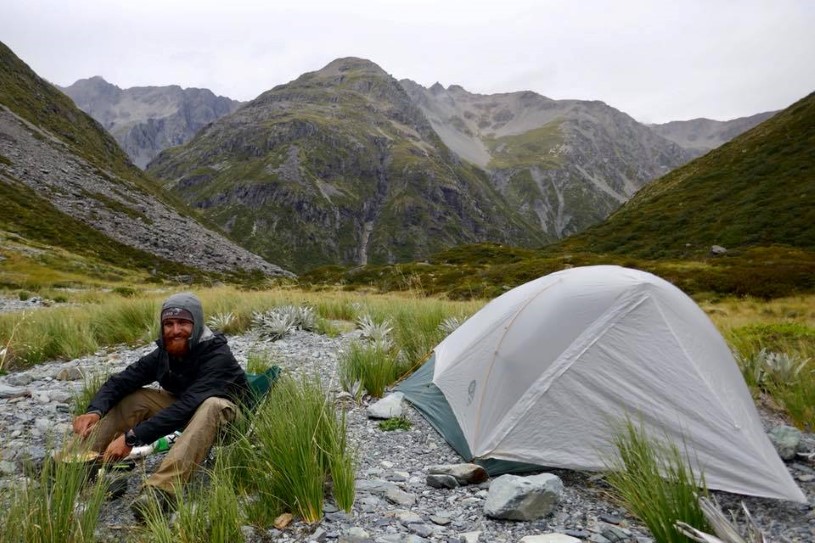
One of the best beer cities, ever
Arriving to Wellington was overwhelming and felt like a massive accomplishment. We had crossed New Zealand’s North Island. But we were only halfway there.
Walking for over two months is simple enough. However, having the energy to wake up, pack up the tent and walk every single day – for two months, no matter the weather – proved to be quite challenging. We had to remind ourselves we still had a whole other island to conquer, which honestly felt rather daunting. Especially considering the South Island is known to be rather challenging with non-stop rugged mountain ranges.
We took a few days in Wellington to rest, relax, and enjoy heaps of food and beer before tackling the next challenge.
When we arrived to Cape Reinga some 66 days ago, my heart was racing with all the unknowns. As we walked each day, a rhythm and routine was found. Each day we’d wake up and walk. We’d walk until we were tired then eat, sleep and repeat.
As we took the ferry to the South Island, it felt like we were starting at mile zero once again and honestly, that felt rather daunting.
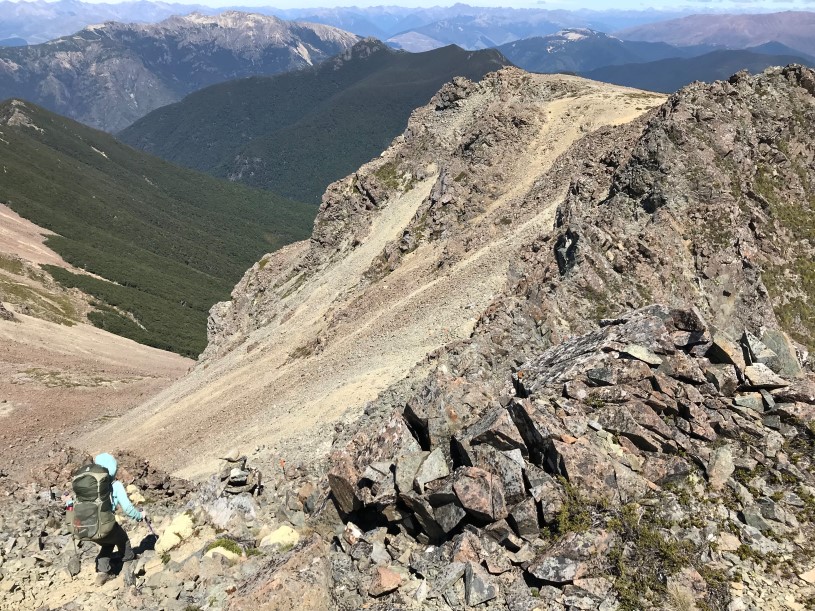
The South Island
Glow worms
Arriving at Picton, we kept the tradition alive by purchasing a newspaper full of deliciousness at the local fish n chippery. Then the next day, we caught a water taxi to Ship Cove to begin the Queen Charlotte Track and our first KM’s on the South Island.
Though the lush green forest and tranquil blue water was beyond perfect to hike amongst, it was in the middle of the night that we were exposed to something so unreal, it felt like we were in a fairy tale.
We set up our tent and it seemed like every other night, until we saw the distant glow. A spring amongst the hill appeared to have dozens of glowing illuminations. Upon closer examination, it was hundreds of glow worms. It was an enchanting experience, and that night will remain as one of the memorable nights of the trip.
After a few days of gorgeous bay side tramping, we arrived at the town of Havelock, famous for the green lipped muscles. Always trying to get a taste of the local flavour we enjoyed a feast of muscles before tackling the next epic: The Richmond Range.
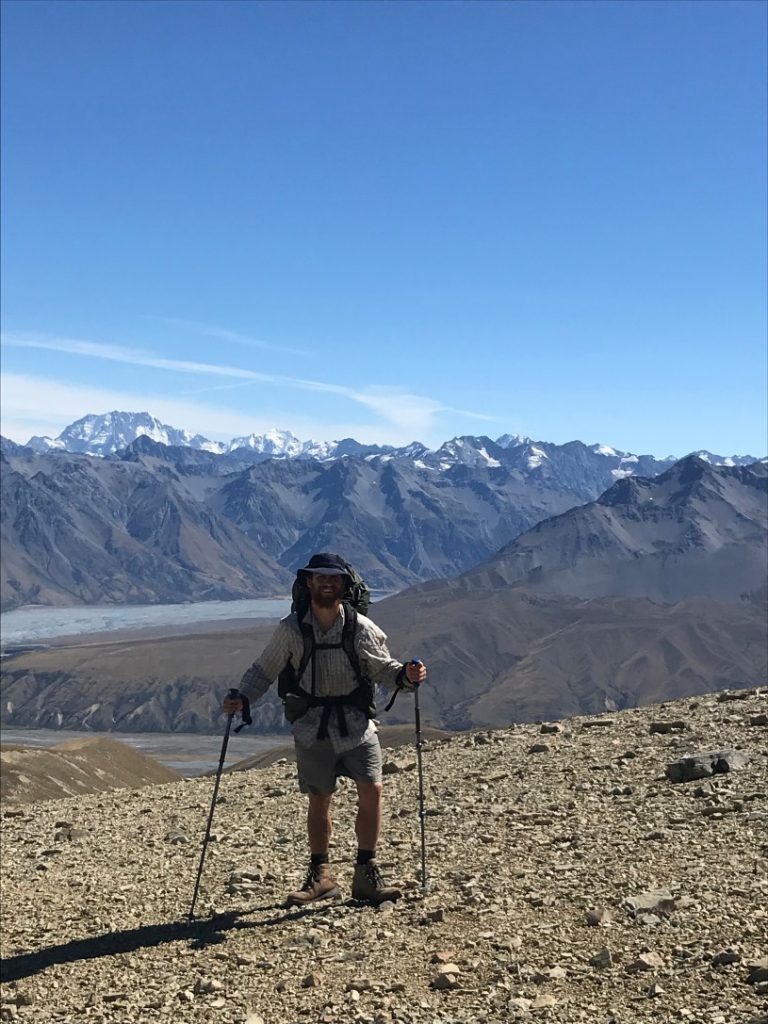
Cyclone Gita
River crossings, swing bridges, alpine tramping, oh and did I mention cyclones? The Richmond Alpine Track is very rugged. The summits are consistently above 1,500m and the track has many steep, exposed sections and an absurd amount of river crossings. Though the challenges were present, we finally felt like we were in the famous mountains commonly referred to as the Southern Alps and I couldn’t be more thrilled.
High up in the mountains, we (fortunately) got a got a hint of cell service and were alerted to Cyclone Gita. It was forecast to expel an absurd amount of rain making all river crossings impassable and produce gale force winds that would knock down our tent, and we just happened to be in the direct epicentre of it. We had to make a decision to either bunker down in a hut until the storm passed (which could be many days) or find an alternative way out.
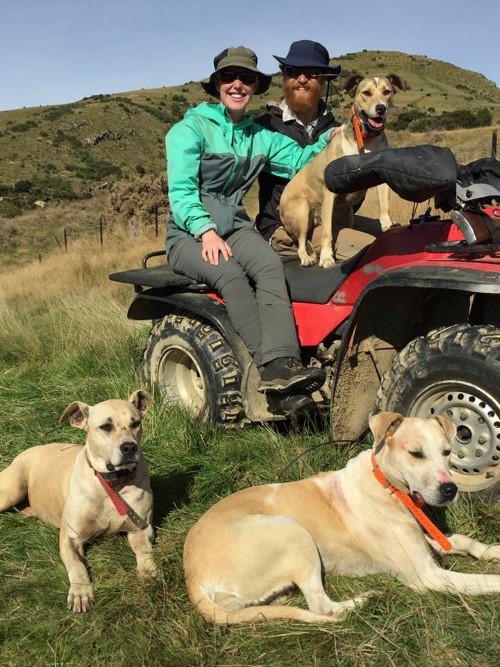
We were deep in the mountains and were the only ones in the hut that night. It was pitch dark, not a trace of moonlight. The storm was supposed to arrive in about 24 hours.
The next morning we made our decision: we slammed down some Nutella, ate a handful of banana chips and veered our way off the Te Araroa to hopefully land somewhere dry that night. The route we took had not been touched in years. Constantly the route was eroding into the river and barricaded by fallen trees. It was a painfully slow process and the hours were ticking down until the epic storm was supposed to hit. We finally ended up at an abandoned dirt road where, in the far distance, we saw a small truck. We started running full speed towards it, waving our hiking poles, most likely looking like a bunch of nut cases. We were welcomed into their car and given a place to stay.
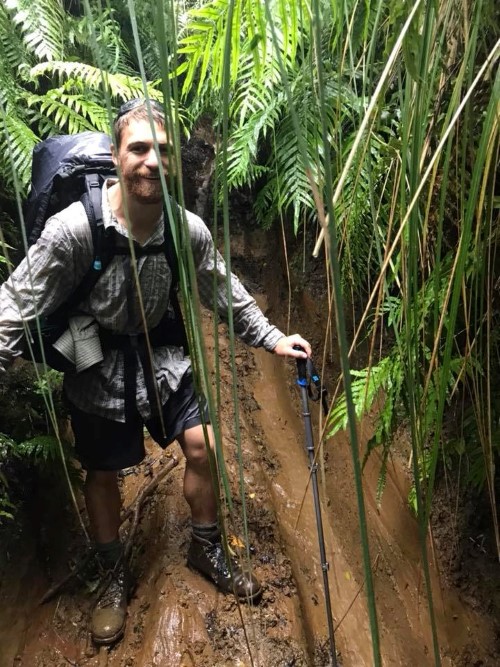
Pig hunter
The storm was epic. Horizontal rain, 60mph winds and nasty weather protruded for the next 48 hours. Somehow our plan of escaping the Richmond Range worked. But no matter how much planning we did, we could never have seen what came next: pig hunting.
The family who picked us up, a dad and two young boys, were exceptionally energetic about the sport of pig hunting. We arrived to their home in Wakefield and were greeted by the two pig hunting dogs. The walls were decorated by heads of boars that they proudly hunted, and family photos covered the walls of the boys and dad on various pig hunting trips. That evening we all ate fish n chips and watched pig hunting home videos as the storm rattled the house.
It was quite fascinating to learn about this sport in depth. Going into the rugged bush by ATV, looking for prints and marks on the ground, utilizing dogs with GPS collars, all while removing an introduced invasive pest that just happens to make for some tasty eating. When they asked if we wanted to go for a pig hunt, I said hell ya! When the storm finally passed, we loaded up the dogs, shot gun, knives, and ATVs and headed out to the bush.
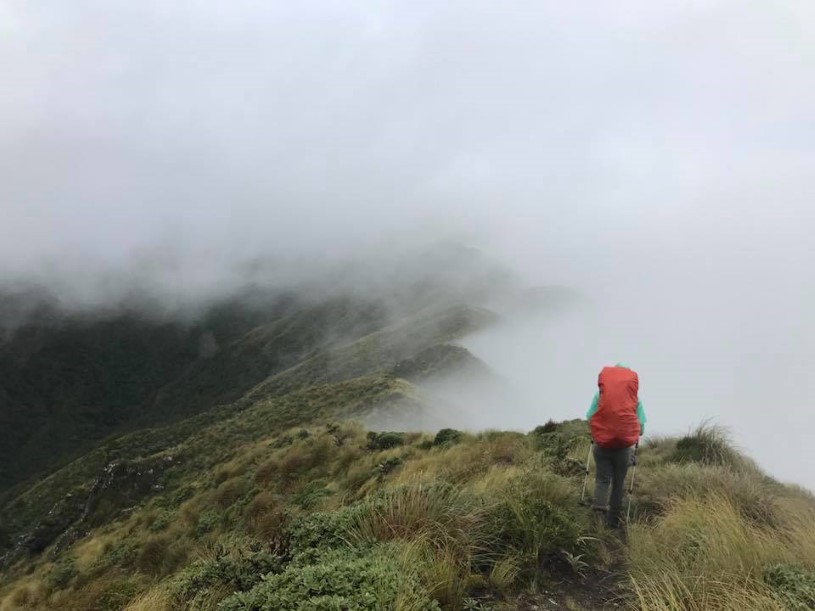
In praise of National Parks
As Park Rangers back in the United States, we were thoroughly impressed by the number of National Parks and protected land we continually got to walk through. Immediately after Nelson Lakes National Park we entered Arthurs Pass National Park, which supplied us with the ultimate alpine experience as we ventured up to Barker Hut. The hut sits on a remote mountain top in Arthurs Pass and requires a two day trek to get there. We walked amongst the braided riverbed of the Waimakariri before doing an insanely steep and scrambly ascent to the hut, sitting precariously on the cliff edge. As we worked our way up the steep ascent, bitter cold rain protruded on us, and the cliff walls turned into an immense display of waterfalls. The little red hut stood in the distance as we slowly climbed the steep mountain face. We were in the heart of the Southern Alps and were the only ones in sight.
Tired and exhausted we went to bed that night with plans to sleep in the next morning. However, the cheeky Kea, New Zealand’s alpine parrot decided we needed a 6am wake-up call. The constant stomping on the metal roof rattled the whole hut. Though I was half annoyed at the rude awakening, the Kea’s were quite hilarious and fun to watch. They had so much personality and we certainly enjoyed watching them with our morning cuppa.
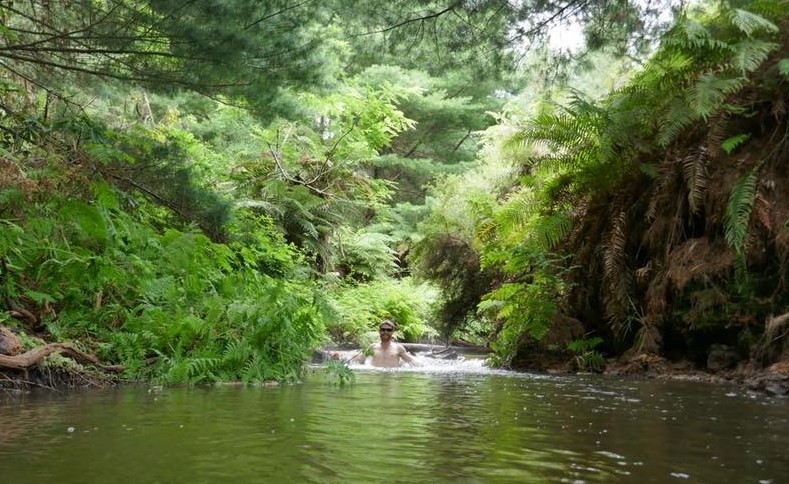
The final push
We had left winter on the northern hemisphere four months before. But as the kilometres of tramping went on, so did time. And winter once again found us, this time in New Zealand’s alpine.
The snowstorm came out of nowhere. It was an awful day. The travel was slow and it was by far the coldest day on the trail, and probably my life. Our bodies felt frozen. The worst was the dozen or so river crossings. The water was painfully frigid, and it didn’t help sloshing through a foot of snow once we got out of the water. I don’t think we took any breaks that day. It was too cold to stop, and food and water just didn’t sound appetizing. We made it to a hut, which was thankfully equipped with a fireplace. I made a fire, put on dry clothes and drank heaps of hot tea. The end of the Te Araroa was near, and this was a hell of a way to finish it off.
We walked the final kilometres and arrived to Bluff, the finish line of the Te Araroa, and the southern end of NZ, about 136 days after we left Cape Reinga. My mind was in a whirlwind thinking back to everything that happened over the last four and half months.
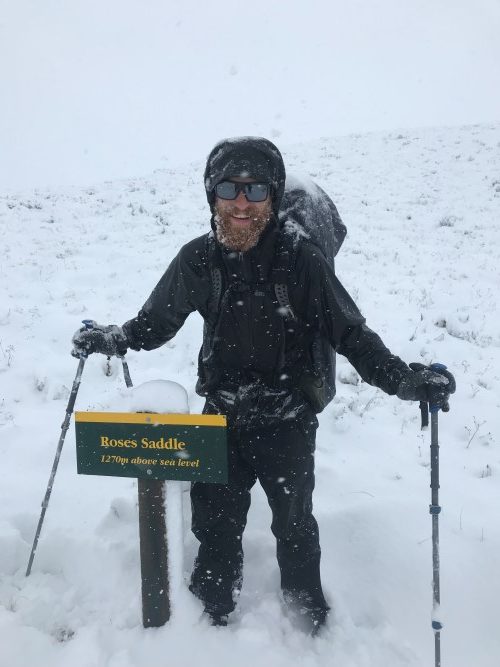
Without doubt, this trip was so much more than a 3,000km walk.
Thank you everyone who supported us along the way. Next Challenge Grant, thank you for the generous funds. To all the locals who helped us along the way, we have not forgotten about you, and we hope to pay it forward in America. And to everyone who supported us from afar, we appreciated you cheering us along the way. And most of all, thank you Eve for being the greatest traveling partner I could ask for!
I hope this story highlighted some of memorable aspects of walking across New Zealand on the Te Araroa Trail. My number one piece of advice- don’t over plan your adventure and say yes to all opportunities that come your way.
That evening after making it to Bluff, we properly enjoyed heaps of beer and fish n’ chips. Too tired to set up the tent in the piss poor weather, we camped in the laundry room at a local camp ground. Obviously, we may need some time to adjust back to “society”…
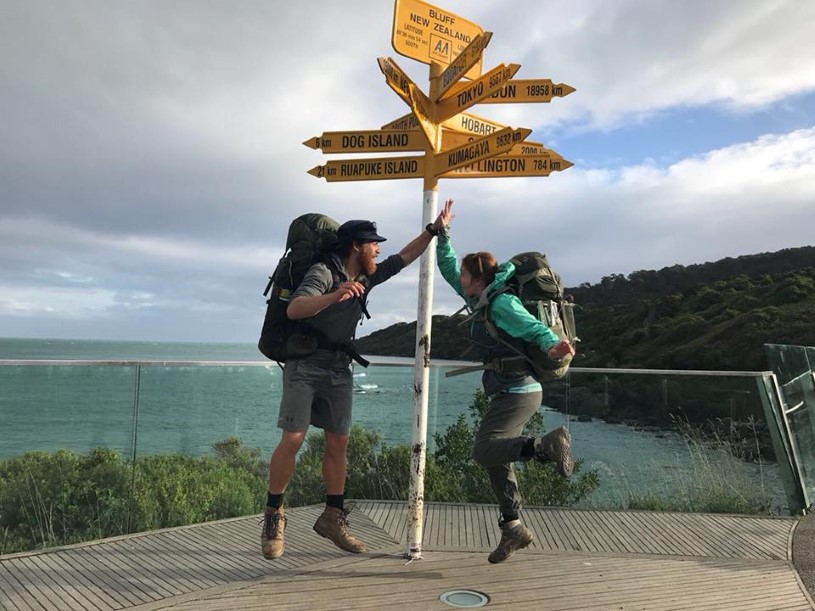
[one_sixth]–[/one_sixth]
[two_third][box]
The Next Challenge Grant
Chase won a £200 award from The Next Challenge Grant.
The money came from me, other adventurers and members of the public.
Do you have an adventure idea that you need help with?
[/box][/two_third]
[one_sixth_last]–[/one_sixth_last]
Chase originally won his grant for an expedition to walk from Death Valley to Mount Whitney. For various reasons, he wasn’t able to complete the trip but, instead, undertook this even larger challenge.
What do you think? Please do add your thoughts below…